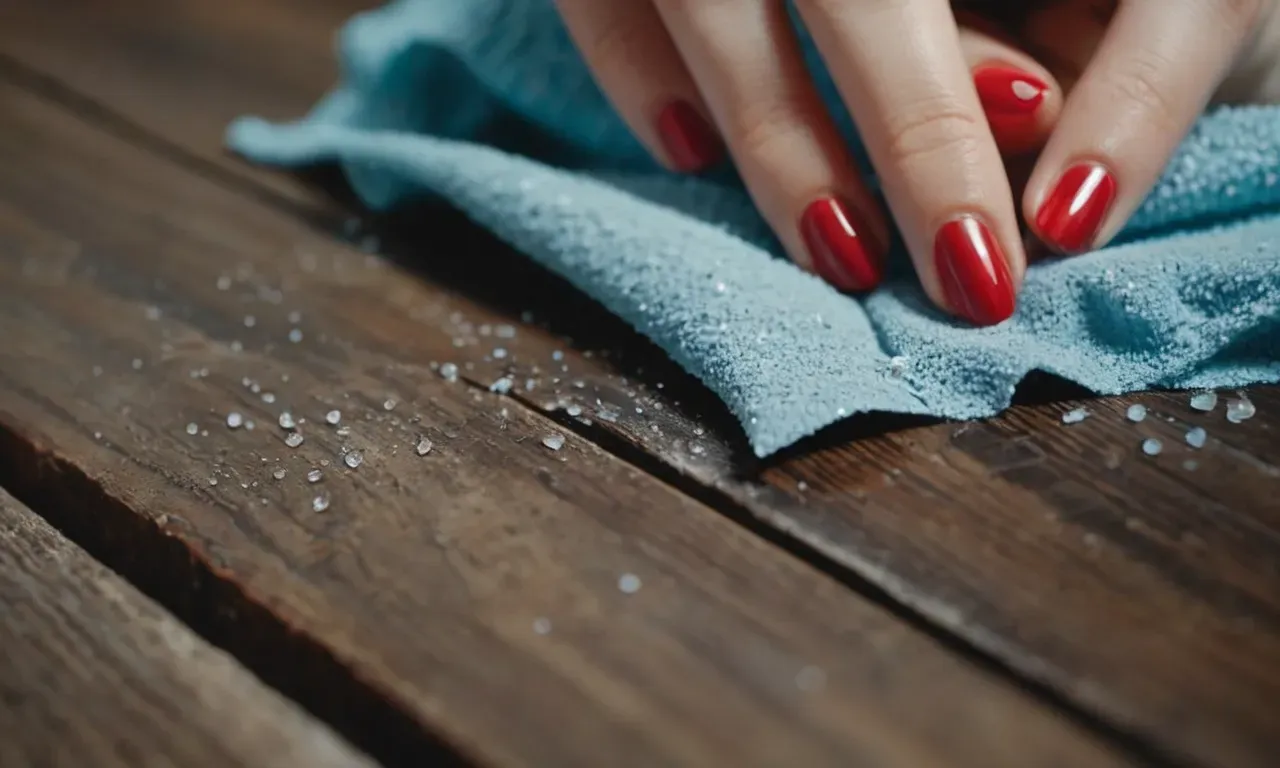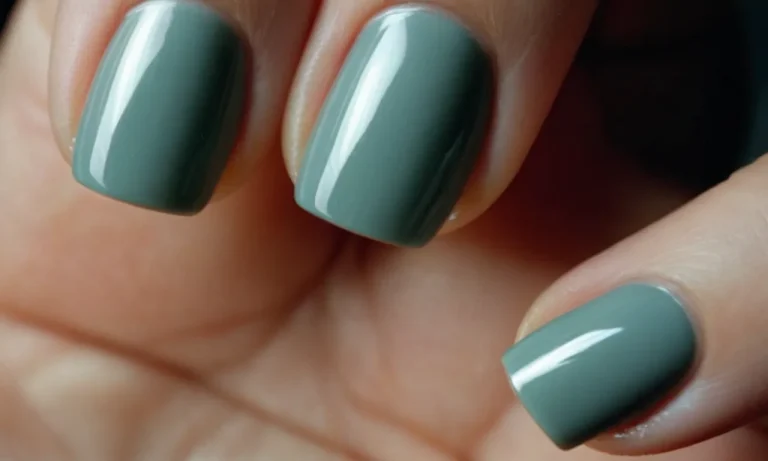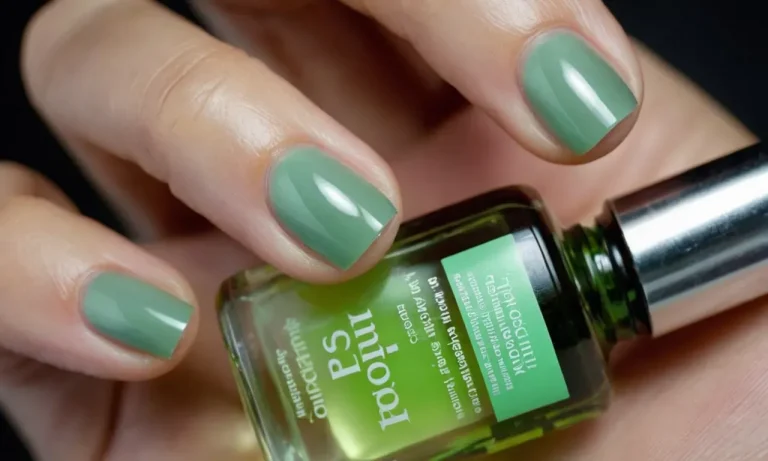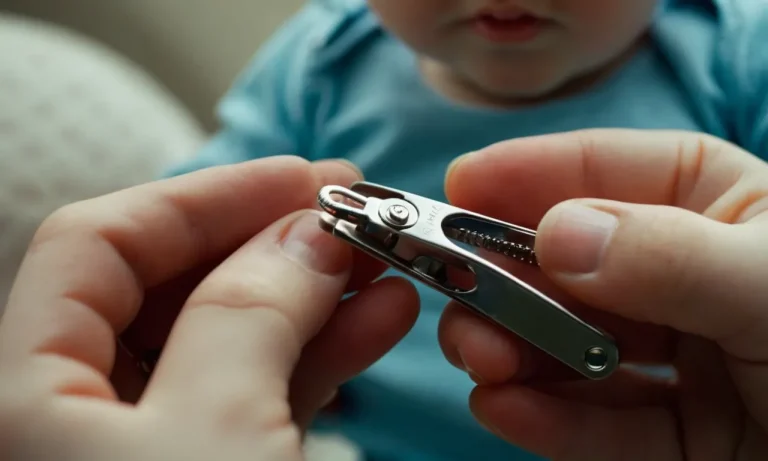How To Get Nail Polish Remover Off Wood
Trying to remove nail polish from wood and found you made the problem worse? Don’t panic – with the right techniques and products, you can get rid of that nail polish stain and restore your wood furniture, floors or trim.
In this comprehensive guide, we’ll walk you through everything you need to know to safely and effectively remove nail polish from wood.
If you’re short on time, here’s a quick answer: use non-acetone nail polish remover and a soft cloth to gently blot the stain. Then buff the area with toothpaste or baking soda. Avoid using acetone-based removers, and never scour or scrub the wood.
Assess the Stain
Determine if it’s fresh or dried polish
Determining if the nail polish on the wood is fresh or dried is an important first step. Fresh polish will be easier to remove before it has fully dried and hardened.
- Fresh polish will still feel tacky or sticky to the touch. It may smudge if you gently rub it with your finger.
- Dried polish will be dry to the touch and fully hardened. It likely won’t smudge or transfer when touched.
- Hardened polish can be more difficult to remove depending on the type of finish and how long it has been there.
Identify the type of wood and finish
The next step is identifying what type of wood and finish you are working with. This will determine the best removal method to use while avoiding damage.
- Is it a natural wood like oak, maple, cherry etc. or a manufactured wood product?
- Does it have a clear finish allowing the wood grain to show or is it painted/opaque?
- Common clear finishes include polyurethane, varnish, shellac and lacquer. They vary in durability.
For example, a dried polish stain on oak with a polyurethane finish may be gently removed with non-acetone nail polish remover. But using acetone on the same surface could damage the finish.
On the other hand, dried polish on a painted wood surface can likely be removed safely with acetone. Testing removers on an inconspicuous area first is always a good idea.
Remove Fresh/Wet Polish
Use a non-acetone nail polish remover
If you’ve just spilled or dripped nail polish onto a wooden surface, quickly grab a non-acetone nail polish remover. The key is to act fast before the polish has time to dry and adhere to the wood. Gently dab a cotton ball soaked in non-acetone remover onto the wet polish.
The chemicals in the solution will break down the polish. Take care not to rub too hard as this may scratch the wood.
Acetone-based removers are too harsh for wood and may strip the finish. A non-acetone formula with ingredients like ethyl acetate or propyl acetate works best. According to BobVila.com, Goo Gone also makes an effective wood-safe polish remover.
Gently blot with a soft cloth
After applying the non-acetone remover, gently blot the area with a soft lint-free cloth to soak up the dissolving polish. Smooth, circular motions work best without putting too much pressure on the wood. Be patient and repeat the process until no more traces of color transfer onto the cloth.
Taking your time reduces the risk of abrasion.
According to polish removal experts at Nailed By Me, microfiber cloths grab polish effectively while staying gentle on wood surfaces. Paper towels work in a pinch too.
Wash with soap and water
Once the spill is gone, wash the area with a mild soap and warm water solution to remove any lingering remover residue. This also helps lift traces of stain from the wood pores for a cleaner finish. Let the surface dry completely before reapplying any new finishes or polish.
Wood care sites advise mixing a couple drops of dish soap into a bowl of warm water. Use minimal pressure when scrubbing to avoid scuffing. Rinse thoroughly and pat dry with a clean towel. Allow at least 8 hours before varnishing or staining.
Remove Dried Polish
Try non-acetone remover first
When nail polish spills or drips onto wood, it can leave behind a stubborn stain. Acetone-based removers are effective at dissolving polish, but they can also damage wood finishes. For best results, first try a non-acetone nail polish remover.
Look for removers labeled “acetone-free” or with ingredients like ethyl acetate, isopropyl alcohol, or butyl acetate. Test the remover on an inconspicuous area first to ensure it doesn’t affect the wood’s finish.
Apply a small amount of non-acetone remover to a clean cloth and gently rub the stained area. Let it sit for a few minutes to allow the chemicals time to break down the polish. Wipe with a clean cloth. For dried stains, you may need to apply more remover and agitate with a soft bristle brush.
Repeat as needed until the stain disappears. Once gone, immediately wipe the area with a damp cloth to remove any chemical residue.
Use toothpaste or baking soda
For light stains on finished or unfinished wood, you can try using household products like toothpaste or baking soda. The gentle abrasives in these can lift color without damaging wood. Mix a paste of baking soda and water and apply it to the stain with a soft cloth or toothbrush.
Let it dry completely, then wipe away. For toothpaste, squeeze out a small amount, rub it onto the stain, let it sit for 5 minutes, then wipe clean with a damp cloth.
Test these methods first, as toothpaste and baking soda may affect some wood finishes. They work best on light stains. Don’t scrub too hard, as the abrasives could scratch the wood. You may need to do several applications to fully lift the polish.
Sand and refinish if needed
For dried or stubborn stains on bare wood, light sanding may be required. Use 220-grit sandpaper and gently sand just the affected area. Try to keep sanding to a minimum. Wipe away any polish residue with a tack cloth.
If needed, re-stain the sanded spot with a matching wood stain and apply a fresh coat of polyurethane or other finish.
Extensive staining may require sanding and refinishing the entire surface. This is a bigger project best left to professionals. Refinishing can restore wood’s appearance, but destroys the existing finish. Consider it a last resort if other methods fail to remove the polish.
Prevent Stains in the Future
Use nail polish remover pads
Using nail polish remover pads instead of liquid nail polish remover can help prevent stains in the future. The pads have a barrier that absorbs excess remover and polish, preventing drips and spills. According to the beauty experts at Ulta, the remover pads allow for more control and less mess when taking off nail polish.
The pads are also great for travel or on-the-go touch ups. Keep a pack in your purse or travel bag. That way if your manicure chips while you’re out, you can quickly fix it without worrying about spills in the car or bathroom!
Apply vaseline along edges
Before painting your nails, apply a thin layer of vaseline along the edges of your nails with a cotton swab. This will act as a protective barrier to keep stray polish from getting on your skin or furniture.
The vaseline peels off easily when you’re done with your manicure, removing any globs of polish with it.
You can also lightly coat wood surfaces near where you paint your nails with vaseline. That way if any droplets do escape, they’ll land on the lubricated surface and be easy to wipe away instead of staining the wood.
Consider using peel-off base coat
Peel-off base coats for nail polish create a smooth, even layer that your polish adheres to. When you’re ready to remove the polish, the base coat peels off in one piece, taking the color with it! No rubbing or scraping required.
This helpful base coat acts as a shield between your nail polish and furniture. As you move your hands around while talking or texting, you don’t have to worry about sticky polish accidentally getting on surfaces. And cleanup is a breeze – just peel it off!
Most peel-off base coats work best with regular nail polish, not gel. And you want to remove the polish after 3-5 days before the base coat becomes too attached to the nail.
Conclusion
Removing nail polish from wood takes patience, but can be accomplished with the right products and techniques. Always start mild when possible, test on an inconspicuous spot, and take your time to gently lift the polish without damaging the wood finish.
With some diligence and care, you can get your wood looking stain-free once again.







